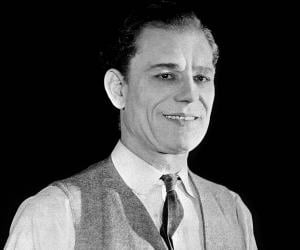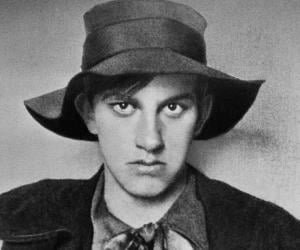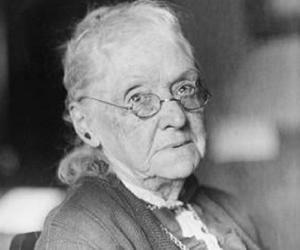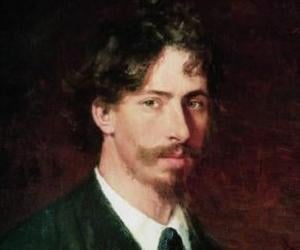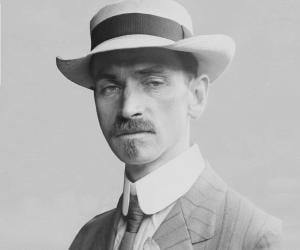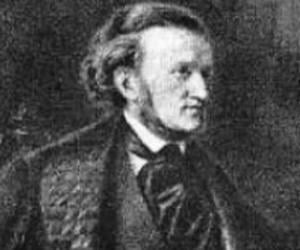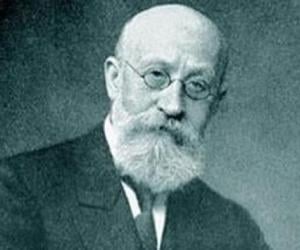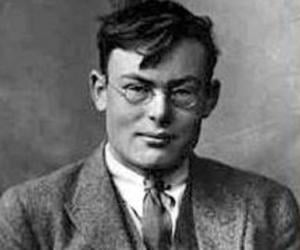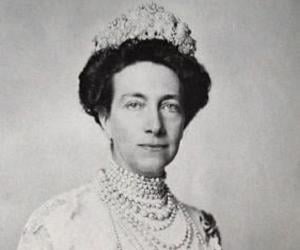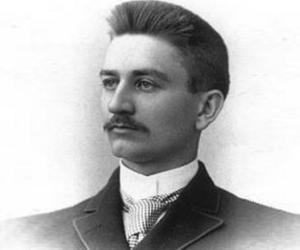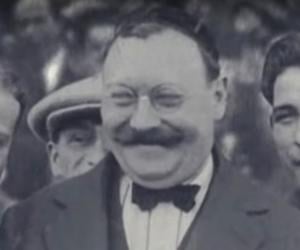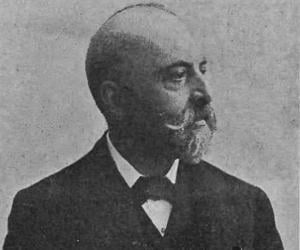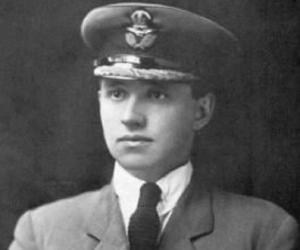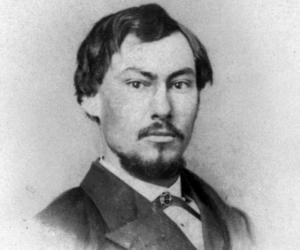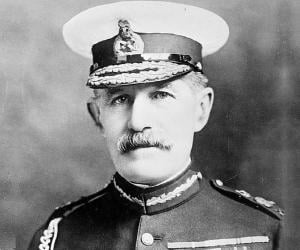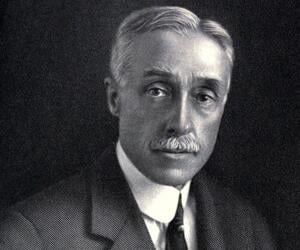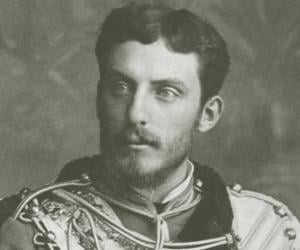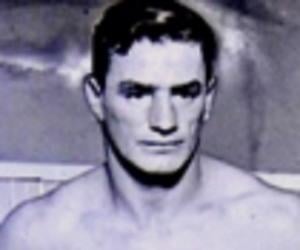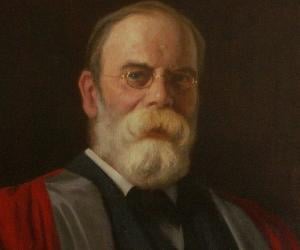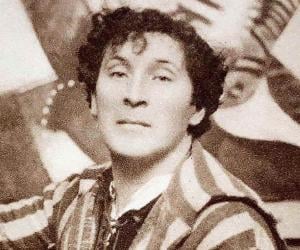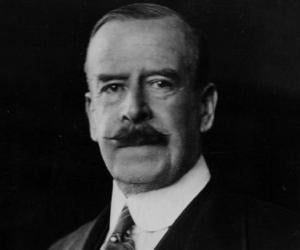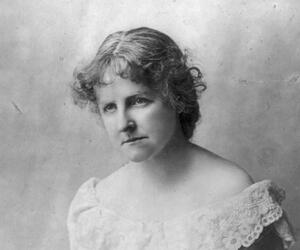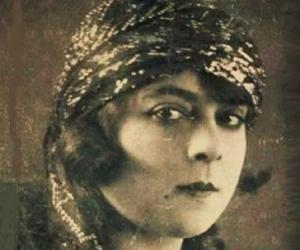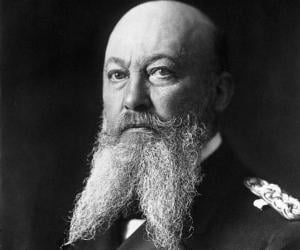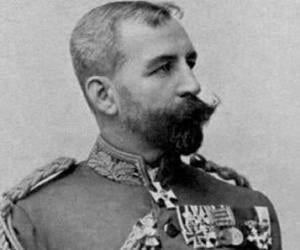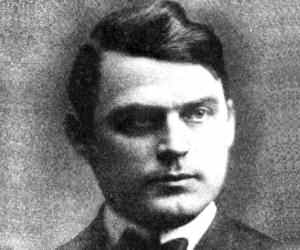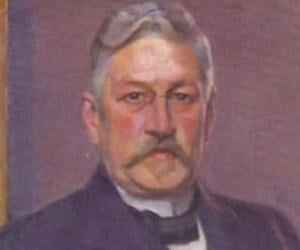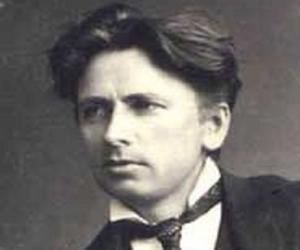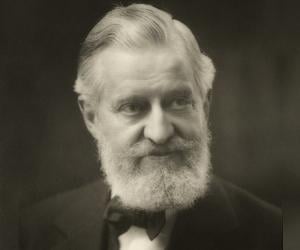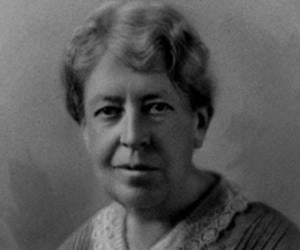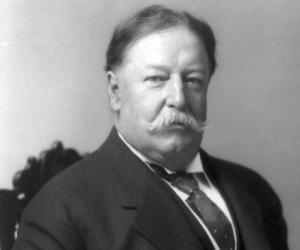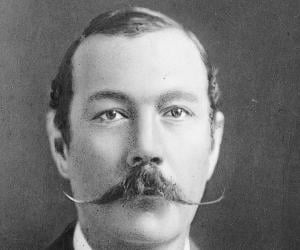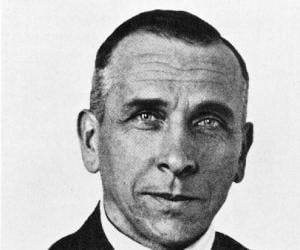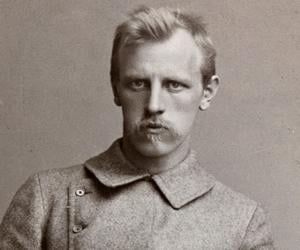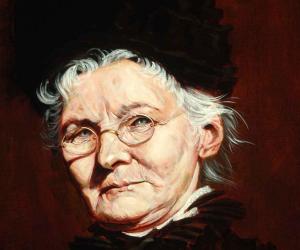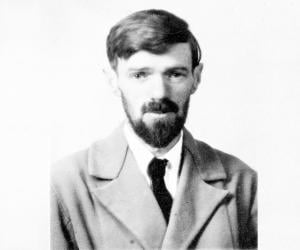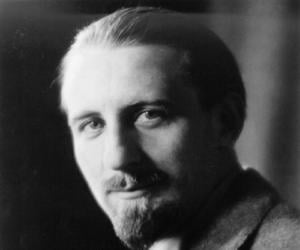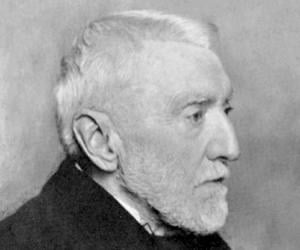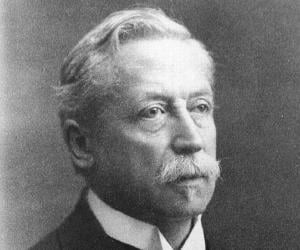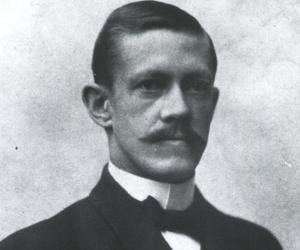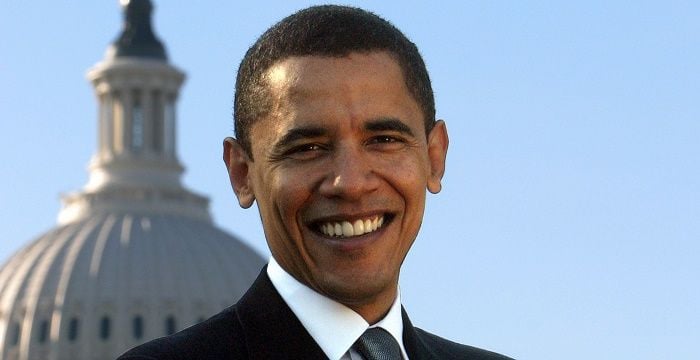Famous People Who Died In 1930
Discover the most famous people died who died in the year 1930. This list includes people like William Howard Taft, D. H. Lawrence, Carl Panzram, Alfred Wegener, Arthur Balfour and many more. This list of celebrities is loosely sorted by popularity. People featured on this list, include political leaders, composers, novelists and poets who died in 1930. This list includes people from United States, United Kingdom, Germany and many more countries.
Vote for Your Favourite People Who Died In 1930
Right IconThis ranking is based on an algorithm that combines various factors, including the votes of our users and search trends on the internet.
Birthdate: September 15, 1857
Sun Sign: Virgo
Birthplace: Cincinnati, Ohio, United States
Died: March 8
The 27th president of the United States, William Howard Taft also served as the tenth Chief Justice of the US; he is the only person in the history of the US to have held both the offices. He had a great impact as chief justice and has been regarded as the greatest US chief justices of all time.
Birthdate: May 22, 1859
Sun Sign: Gemini
Birthplace: Scotland
Died: July 7
Physician-turned-author Sir Arthur Conan Doyle is remembered for creating the iconic character Sherlock Holmes. He wrote four novels and 56 short stories on Holmes’s detective adventures and also created the characters Professor Challenger and Brigadier Gerard. A sports lover, he had dabbled in cricket, football, and bodybuilding, too.
3
Alfred Wegener(German Climatologist and Geophysicist Known for His 'Continental Drift Theory')
Birthdate: November 1, 1880
Sun Sign: Scorpio
Birthplace: Berlin, Germany
Died: November 1
In the early 1900s, meteorologist Alfred Wegener did not find too many takers for his theory that all the continents of the world had initially been a single mass named Pangaea and that continental drift had caused them to split apart. Wegener died on his fourth expedition in Greenland.
4
Fridtjof Nansen(Nobel Peace Prize Laureate and the First High Commissioner for Refugees Appointed by the League of Nations)
Birthdate: October 10, 1861
Sun Sign: Libra
Birthplace: Oslo, Norway
Died: May 13
Fridtjof Nansen was a Norwegian polymath who won the prestigious Nobel Peace Prize in 1922 for his post-war efforts after the First World War. A well-known explorer, humanitarian, and diplomat, Nansen achieved international fame for his attempt to reach the geographical North Pole during his Fram expedition. His techniques and innovations influenced a generation of succeeding Antarctic and Arctic expeditions.
Birthdate: April 1, 1883
Sun Sign: Aries
Birthplace: Colorado Springs, Colorado, United States
Died: August 26
Height: 5'10" (178 cm)
6
Vladimir Mayakovsky
(Russian Poet and Playwright Who was a Prominent Figure of the Russian Futurist Movement)
Birthdate: July 19, 1893
Sun Sign: Cancer
Birthplace: Baghdati, Georgia
Died: April 14
Vladimir Mayakovsky was a Russian and Soviet playwright, poet, artist, and actor. He was a prominent figure of the Russian Futurist movement in the pre-Revolution period leading to 1917. He produced a large and diverse body of work during his career. He admired Vladimir Lenin and supported the ideology of the Bolsheviks. He was popular outside Russia as well.
Birthdate: May 1, 1830
Sun Sign: Taurus
Birthplace: Cork, Ireland
Died: November 30
After losing her husband and children in a yellow fever epidemic and her dress shop in the great Chicago fire, schoolteacher and dressmaker Mary Harris Jones became an activist, earning the nickname Mother Jones. A prominent unionist for coal miners and other workers, she also co-founded the Social Democratic Party.
8
D. H. Lawrence(English Writer and Poet Known for His Novels: ‘Sons and Lovers’, ‘The Rainbow’ and ‘Women in Love’)
Birthdate: September 11, 1885
Sun Sign: Virgo
Birthplace: Eastwood, England, United Kingdom
Died: March 2
English writer, D. H. Lawrence, was known for exploring sensitive issues, such as sexuality, emotional health, and instinct. In his works, he often reflected upon the dehumanizing effects of modernity and industrialization. The sexual nature of his writings earned him many enemies. Even though he died at the relatively young age of 44, he left behind a rich literary legacy.
9
Rebecca Latimer Felton
(First Woman Who was Appointed to the United States Senate)
Birthdate: June 10, 1835
Sun Sign: Gemini
Birthplace: Decatur, Georgia, United States
Died: January 24
Writer, lecturer, suffragist, reformer, feminist, politician and slave-owner Rebecca Latimer Felton was the first woman who served in the United States Senate. The most distinguished woman in Georgia during the Progressive Era, Felton was appointed Senator from Georgia as a mark of respect. With this she became the oldest freshman-senator who entered the Senate and served for just 24 hours.
10
Ilya Repin
(Russian Painter Who was One of the Most Renowned Artists in Russia During the 19th Century)
Birthdate: August 5, 1844
Sun Sign: Leo
Birthplace: Chuhuiv, Ukraine
Died: September 29
Born amid poverty in Ukraine, Ilya Repin earned himself an art scholarship and later devoted his life to historical painting. A major figure of the realist movement in painting, he had also been the subject of controversies, such as the withdrawal of his painting of Ivan the Terrible murdering his own son.
11
Zewditu
(Empress of Ethiopia (1916 - 1930))
Birthdate: April 28, 1876
Sun Sign: Taurus
Birthplace: Werreyimenu, Wollo
Died: April 2
Zewditu, a 20th-century Ethiopian empress and the eldest daughter of King Menelik of Shewa, scripted history as the first female head of an internationally recognized African state. She was also the first and last empress regnant of Ethiopia. It’s widely believed, she died of shock 2 days after her husband’s death in battle.
12
Glenn Curtiss
(American Aviation and Motorcycling Pioneer & Founder of the U.S. Aircraft Industry)
Birthdate: May 21, 1878
Sun Sign: Gemini
Birthplace: Hammondsport, New York, United States
Died: July 23
Glenn Curtiss was an American motorcycling and aviation pioneer. He is credited with founding the U.S. aircraft industry. He is also credited with forming the Curtiss Aeroplane and Motor Company which merged with the Wright Aeronautical to form Curtiss-Wright Corporation in 1929. Glenn Curtiss’ company played a major role in the years leading up to the First World War.
Birthdate: December 24, 1837
Sun Sign: Capricorn
Birthplace: Bellagio, Italy
Died: April 1
14
Eugen Goldstein
(Physicist)
Birthdate: September 5, 1850
Sun Sign: Virgo
Birthplace: Gliwice, Poland
Died: December 25
15
Frank P. Ramsey
(Mathematician, Philosopher, Economist)
Birthdate: February 22, 1903
Sun Sign: Pisces
Birthplace: Cambridge
Died: January 19
British philosopher and mathematician Frank P. Ramsey was the son of a famed mathematician and later laid down the Ramsey theory of mathematical logic. The Cambridge alumnus also translated Ludwig Wittgenstein’s Tractatus Logico-Philosophicus but died at age 26, probably due to a liver infection he contracted while swimming.
Birthdate: August 7, 1862
Sun Sign: Leo
Birthplace: Karlsruhe, Germany
Died: April 4
Birthdate: October 30, 1894
Sun Sign: Scorpio
Birthplace: London
Died: December 17
18
Rube Foster
(Former Baseball pitcher, Founder of Negro National League)
Birthdate: September 17, 1879
Sun Sign: Virgo
Birthplace: Calvert, Texas, United States
Died: December 9
Height: 6'4" (193 cm)
19
Herbert Henry Dow
(American Chemical Industrialist and Founder of the Multinational Conglomerate 'Dow Chemical')
Birthdate: February 26, 1866
Sun Sign: Pisces
Birthplace: Belleville, Canada
Died: October 15
Herbert Henry Dow taught chemistry before venturing into a business career. Though his first company was a failure, his work impressed investors, and he was soon able to establish Dow Chemical, which supplied low-cost bromine to the US markets. He later made auto pistons out of spare magnesium.
20
Joan Gamper
(Former Football Executive Who Founded Football Clubs in Switzerland and Spain)
Birthdate: November 22, 1877
Sun Sign: Sagittarius
Birthplace: Winterthur, Switzerland
Died: July 30
Swiss-born sports executive Joan Gamper is best remembered as the founder of the legendary football club FC Barcelona. A sports enthusiast since his childhood, he excelled in many sports, such as football, golf, and tennis. He died of suicide at age 52, apparently driven by depression related to financial issues.
Birthdate: June 1, 1843
Sun Sign: Gemini
Birthplace: Beith
Died: March 19
22
Leopold Auer
(Hungarian Composer, Conductor and Violinist)
Birthdate: June 7, 1845
Sun Sign: Gemini
Birthplace: Veszprém, Hungary
Died: July 15
Legendary Hungarian-American violinist and composer Leopold Auer was born into a family of painters but chose to learn the violin instead. He initially played for the music-loving bling king of Hanover and later taught violin at Russia’s Saint Petersburg Conservatory. His students include Mischa Elman and Jascha Heifetz.
23
William George Barker
(Fighter pilot)
Birthdate: November 3, 1894
Sun Sign: Scorpio
Birthplace: Dauphin, Canada
Died: March 12
Height: 5'9" (175 cm)
24
Harvey Washington Wiley
(Chemist)
Birthdate: October 18, 1844
Sun Sign: Libra
Birthplace: Kent, Indiana, United States
Died: June 30
25
Pierina Legnani
(Ballerina)
Birthdate: September 30, 1868
Sun Sign: Libra
Birthplace: Italy
Died: November 15
26
Horace Smith-Dorrien
(Autobiographer, Military personnel)
Birthdate: May 26, 1858
Sun Sign: Gemini
Birthplace: Berkhamsted
Died: August 12
27
Elmer Ambrose Sperry
(American Inventor and Entrepreneur Who Invented 'Gyrocompass')
Birthdate: October 12, 1860
Sun Sign: Libra
Birthplace: Cincinnatus, New York, United States
Died: June 16
Elmer Ambrose Sperry is best remembered for inventing gyroscopic compasses and stabilizers, which revolutionized navigation technology back in his time. His products had been of great use to the U.S. Navy. His illustrious career had witnessed him gain over 400 patents through his eight manufacturing companies.
28
Infante Antonio, Duke of Galliera
(Duke)
Birthdate: February 23, 1866
Sun Sign: Pisces
Birthplace: Seville, Spain
Died: December 24
Birthdate: August 11, 1858
Sun Sign: Leo
Birthplace: Nijkerk
Died: November 5
Nobel Prize-winning Dutch physician and pathologist Christiaan Eijkman was the first to prove that poor diet is the cause of the disease beriberi, which in turn led to the discovery of vitamins. While he initially worked in the Dutch East Indies, he later collaborated with Robert Koch in his Berlin laboratory.
30
Luigi Facta
(Former Prime Minister of Italy (February 1922 - October 1922))
Birthdate: November 16, 1861
Sun Sign: Scorpio
Birthplace: Pinerolo, Italy
Died: November 5
Luigi Facta was an Italian journalist and politician. He served as the prime minister of Italy from July 1922 to October 1922 before the dawn of Benito Mussolini's dictatorship. Before becoming the prime minister, Facta served as the finance minister of Italy from 1910 to 1914 and again from 1920 to 1921.
Birthdate: 1904 AD
Birthplace: Hibbing, Minnesota, United States
Died: August 25
32
Joseph Wright
(English Philologist and Academic)
Birthdate: October 31, 1855
Sun Sign: Scorpio
Birthplace: Idle, Bradford, United Kingdom
Died: February 27
33
Horst Wessel
(Nazi Party Stormtrooper Who Was Hailed Asa Nazi Hero & Martyr)
Birthdate: October 9, 1907
Sun Sign: Libra
Birthplace: Bielefeld
Died: February 23
A member of the SA, the paramilitary wing of the German Nazi Party, Horst Wessel was murdered by his enemies, probably Communists. Following his death, he was hailed as a Nazi hero and martyr. The song Horst Wessel Lied later became the Nazi anthem and the co-national anthem of Nazi Germany.
Birthdate: March 31, 1885
Sun Sign: Aries
Birthplace: Vidin, Bulgaria
Died: June 5
35
Joseph Ward
(17th Prime Minister of New Zealand)
Birthdate: April 26, 1856
Sun Sign: Taurus
Birthplace: Melbourne, Australia
Died: July 8
New Zealand politician Joseph Ward was a major figure of both the Liberal and United parties. The Australian-born was initially a grain trader and stepped into local politics later. He not only served as the prime minister of New Zealand but also established the world’s first public health ministry.
36
Mary Eleanor Wilkins Freeman
(Author)
Birthdate: October 31, 1852
Sun Sign: Scorpio
Birthplace: Randolph, Massachusetts, United States
Died: March 13
37
Habiba Msika
(Singer, Dancer)
Birthdate: 1903 AD
Birthplace: Tunis, Tunisia
Died: February 21
38
Allvar Gullstrand(Swedish Optician and Ophthalmologist Who is Known for Study of Refraction of Light in the Human Eye)
Birthdate: June 5, 1862
Sun Sign: Gemini
Birthplace: Landskrona, Sweden
Died: July 28
Allvar Gullstrand was a Swedish optician and ophthalmologist. He is best remembered for winning the 1911 Nobel Prize in Physiology or Medicine for his study of the refraction of light in the human eye and of optical images. Allvar Gullstrand is also remembered for his research on astigmatism. Gullstrand also served as a professor at the University of Uppsala.
39
Alfred von Tirpitz
(Politician, Officer)
Birthdate: March 19, 1849
Sun Sign: Pisces
Birthplace: Kostrzyn nad Odrą
Died: March 6
40
Friedrich von Bernhardi
(Prussian General and Military Historian Best Known for His Bellicose Book 'Deutschland und der Nächste Krieg')
Birthdate: November 22, 1849
Sun Sign: Sagittarius
Birthplace: Saint Petersburg, Russia
Died: December 11
Friedrich von Bernhardi was a Prussian general and author. A best-selling author prior to the First World War, Bernhardi is best remembered for his book. Germany and the Next War. A militarist, Bernhardi proposed that Germany should ignore treaties. As a general, he played an important role during World War I where he had success in the Eastern Front.
Birthdate: September 1, 1868
Sun Sign: Virgo
Birthplace: Bellefontaine, Ohio, United States
Died: December 26
Birthdate: January 6, 1864
Sun Sign: Capricorn
Died: April 11
Thomas Robert “Tommy” Dewar, also known as Whisky Tom, was born to a distiller father, who had founded John Dewar & Sons, Ltd. in Scotland. He later expanded his family business, along with his brother, traveling to about 26 nations, and making Dewar’s an internationally renowned whiskey brand.
43
Eduard Polón
(Finnish Business Leader and Founder of the 'Nokia' Group)
Birthdate: June 16, 1861
Sun Sign: Gemini
Birthplace: Nastola, Finland
Died: September 30
Eduard Polón was a Finnish business leader best remembered for founding the Nokia group. He was responsible for launching a rubber industry in Finland and is credited with founding the Finnish Rubber Company. Eduard Polón is also credited with designing and introducing a modern cable and timber market in the country.
44
Jeppe Aakjær
(Former Poet, novelist known for writings that reflected his concern for the impoverished and for describing rural existence)
Birthdate: September 10, 1866
Sun Sign: Virgo
Birthplace: Denmark
Died: April 22
45
Henry Clay Folger
(Business executive)
Birthdate: June 18, 1857
Sun Sign: Gemini
Birthplace: Brooklyn, New York, United States
Died: June 11
Birthdate: October 23, 1844
Sun Sign: Libra
Birthplace: Walmer, Kent, England
Died: April 21
47
John Wheatley
(Politician)
Birthdate: May 19, 1869
Sun Sign: Taurus
Birthplace: Bonmahon, Ireland
Died: May 12
48
Daniel Guggenheim
(Industrialist and philanthropist)
Birthdate: July 9, 1856
Sun Sign: Cancer
Birthplace: Philadelphia, Pennsylvania, United States
Died: September 28
49
Isabella Macdonald Alden
(Author)
Birthdate: November 3, 1841
Sun Sign: Scorpio
Birthplace: Rochester, New York, United States
Died: August 5
50
Mary Whiton Calkins
(Psychologist, University teacher)
Birthdate: March 30, 1863
Sun Sign: Aries
Birthplace: Hartford
Died: February 26
